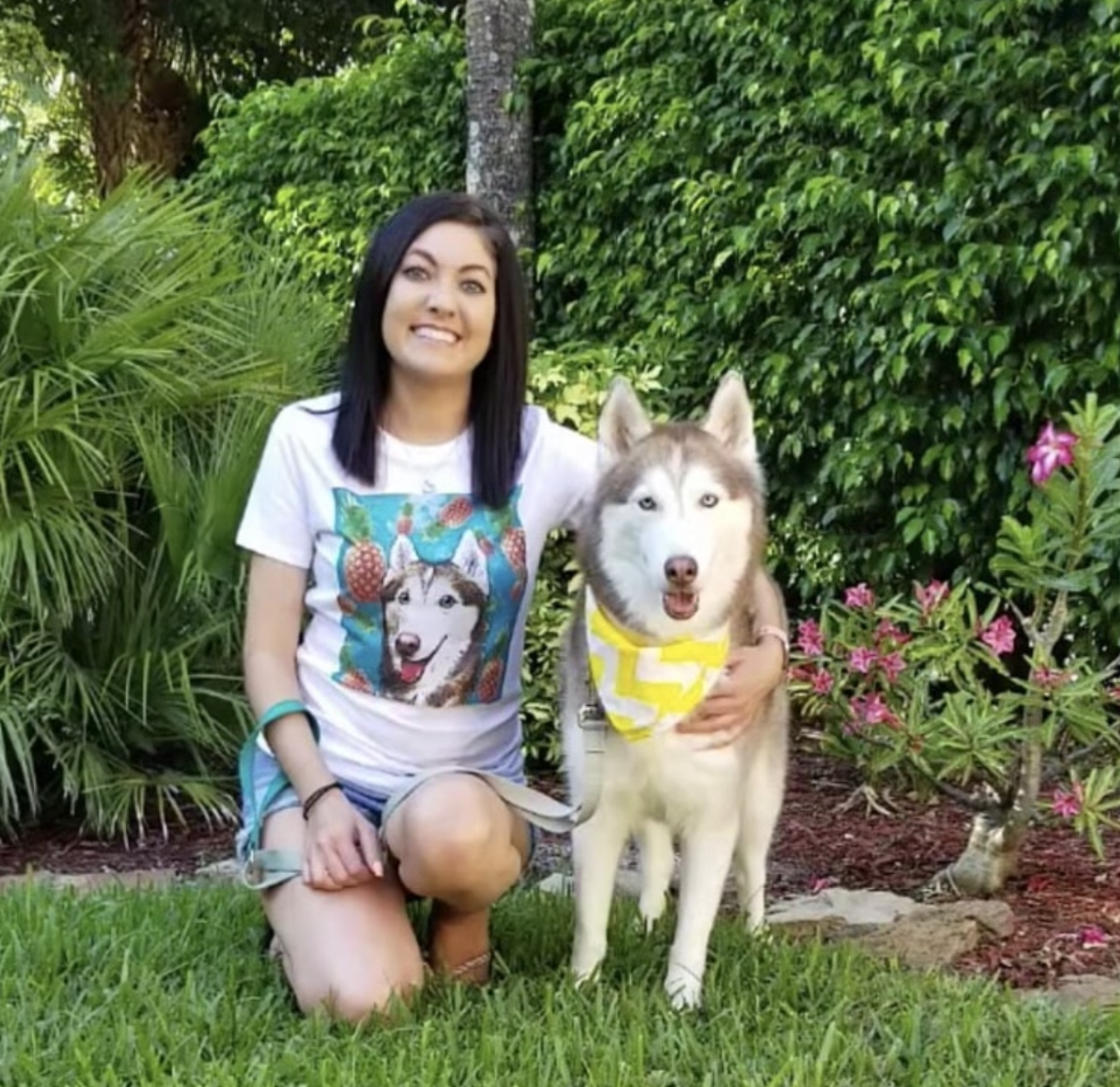There’s a lot of hustle and bustle around Easter weekend, and many take advantage of the warmer weather to get a head start on spring cleaning and gardening. That combo means there’s a good possibility for curious dogs to get themselves into trouble. Make sure to keep your pups and other pets safe from these sneaky Easter and spring hazards!


Dangerous Easter Basket Items
Now’s a good time to spring into action to remind the Easter Bunny to keep those Easter baskets and other treats out of paws’ reach! Things can get a little wild with Easter basket grass flying, hunts for hidden treats, and candy galore. Make sure to keep an eye on your pup during all the action, and never leave Easter baskets unattended!
Candy Wrappers And Foil Wrapping


Individually wrapped candies and chocolates dressed up in their pastel foils or plastic are an Easter basket must! But if you talk to anyone at your local veterinary hospital, they can probably tell you about their own Easter tradition of attending to many pets who got ahold of unattended Easter goodies. The wrappers can potentially cause stomach upset or intestinal blockages. Keep the foil where your pup can’t toil.
Easter Basket Grass


That fluffy plastic grass may grab the attention of your pup and other pets in your house. To them, it’s an interesting texture and just perfect for snuffling their nose through. Actually ingesting it is another story, and can be incredibly dangerous. Too much of this stuff can cause an intestinal blockage that requires emergency surgery to remove1. No snuffling the fluff!
Poisonous Easter Foods
You never know where your dog will find something they shouldn’t during Easter festivities. Quite literally speaking, since many families hide candy in plastic eggs around the house or yard. Dog parents need to be especially conscious of this when hiding treats or when visiting family or friends with your pup in tow. Do you want to let your dog join the Easter fun? Give them their own “egg hunt” by hiding dog-friendly treats around the house so they can sniff ’em out!
Chocolate


We know you saw this one coming. Good ol’ chocolate is bound to be a top contender on any list of dangerous dog foods, but considering it litters most houses during Easter at a rate Willy Wonka would envy, it’s worth the extra reminder.
Chocolate can be extremely toxic to dogs depending on the amount ingested and the type of chocolate—baking chocolate, semi-sweet chocolate, and dark chocolate being the worst culprits. Ingesting chocolate can result in vomiting, pancreatitis, diarrhea, seizures, and even death2.
Sweets Made With Xylitol (Artificial Sweetener)


Xylitol is an artificial sweetener often used in baked goods as a replacement for sugar, and popular among human diabetics. Although xylitol can be a great human sugar substitute, it’s extremely toxic to dogs, quickly absorbed in the stomach, and dangerously drops their blood sugar levels within an extraordinarily short amount of time. It is also toxic to the liver.
When it comes to homemade sweets, it’s best to keep these far out of reach of curious noses, and to check labels on store-bought baked goods. Xylitol may even be tricky to find on the ingredient list, as manufacturers often list it by different names, including birch sugar.
Macadamia Nuts


You’d have to be a nut to let your pup get anywhere near these! Macadamia nuts are toxic to dogs. Signs of toxicity can appear within 3–24 hours, ranging from weakness and vomiting, all the way to tremors, hypothermia, fever, or pancreatitis. Luckily, most dogs recover from Macadamia nut toxicity, but you’ll need to contact your vet or poison control ASAP3. Here’s the ASPCA Poison Control Center number: (888) 426-4435.
Spring Plants That Are Toxic To Dogs
It’s a great weekend to get your spring garden started! You might have guests bringing flowers on Easter, but make sure to keep your pup’s nose away from any of these toxic plants.
Check out the full ASPCA list of plants toxic to dogs to make sure your garden is pet-safe.
Azaleas


Azaleas are hazardous to dogs. They contain a toxin that can lead to vomiting, diarrhea, convulsions, and in severe circumstances, cardiovascular collapse4. It’s best not to plant these in your yard where your dog has access.
Tulips


All parts of the tulip plants contain toxins that can be extremely harmful to both dogs and cats, though the bulbs contain the most concentrated amount. Depending on how much of these pretty plants a dog ingests, they could experience severe vomiting, diarrhea, dehydration, and cardiac irregularities4.
Daffodils


Daffodils contain toxins that cause vomiting, diarrhea, drooling, hypertension, and even seizures in severe cases. While the entire plant is considered toxic to dogs, the bulb contains the highest concentration5.
Other Spring Toxins And Dangers To Dogs
Garden enthusiasts beware! Although it should be common sense to keep chemicals away from your pets, remind yourself of the biggest pet toxin concerns in your gardening arsenal.
Pesticides/Herbicides/Fertilizer


By Easter weekend, the weather is usually beginning to warm up. For many, that’s the perfect time to start getting your hands dirty with some spring gardening. Sometimes, this includes the use of fertilizers, herbicides, or pesticides for flower or vegetable gardens.
When using pellets or powders, place them only in areas your dog can’t access. For instance, in outdoor potted plants or garden beds they can’t reach. When using sprays, it’s generally a good idea to let the area dry before allowing dogs to go exploring. (Refer to the packaging for product-specific instructions for use near children and pets.) Most chemicals used in herbicides, pesticides, and fertilizers are fairly safe when used properly around animals, with the exception of diving nose-first into the packaged product or when using products mixed with other insecticides or pesticides6.
Ingesting these products can cause a variety of symptoms, including but not limited to: vomiting, diarrhea, constipation, lethargy, muscle stiffness, and neurologic or cardiac events—sometimes severe enough to be life-threatening7. If you think your dog may have ingested fertilizer or pesticides, bring the package with you to the vet for a more accurate diagnosis and treatment.
Snail Or Slug Bait


These molasses-flavored brown or brightly-colored pellets can look more like candy or kibble to your pup than a dangerous garden hazard. Take serious caution though, because snail or slug bait toxicity can trigger what is sometimes referred to as “shake and bake” syndrome in dogs.
Ingestion of these pellets (or similar bait sprays or powders) can cause severe twitching and tremors. This can lead to seizures, diarrhea, vomiting, respiratory failure, or even death if not treated immediately. Luckily, most pups can fully recover from poisoning with timely treatment8. Never play the “wait and see” game if you think your dog may have ingested snail or slug bait (or anything potentially harmful!). Get them to the vet right away.
Rodenticides (Rat Poison)


One weekend you invite the Easter Bunny over for a garden party, and the next you’re putting down rodenticides in the garden. Even worse than putting out a hit on the Easter Bunny’s family are the dangers that rodenticides cause to dogs, cats, and other family pets.
Rodenticides are EXTREMELY toxic to pets (they are designed specifically to kill small mammals!) and should never be used in a yard or garden if you have other furry family members. There are two general categories of rodenticides, and neither of them are good news. One type can cause vomiting, convulsions, seizures, paralysis, and potentially death. Emergency medical treatment is required immediately if your best friend gets a mouthful of this stuff.
The other way dogs ingest rodenticides is by eating an already-dead mouse that may have been killed by rodenticide poisoning. (Some rodenticides remain toxic within the body of a dead mouse and will poison whatever animal eats the remains). Treatment may continue for some time beyond your initial ER visit to prevent serious complications.
Mosquito Repellent With DEET


Do NOT spray DEET on your dog! This chemical commonly found in many mosquito repellants can not only cause problems if it gets in the eyes, but also airway inflammation, disorientation, tremors, and seizures9.
Related Article: How To Protect Your Dog From Mosquito Bites
Bunny-Ear Headbands
Just kidding! These are only harmful to your pups’ pride. As long as your dog is comfortable, it’s totally worth it for the photo op. Happy spring and Easter, everyone!


This article has been reviewed by Margo Hennet, DVM.
Margo Hennet, DVM, cVMA, and veterinarian at BARK is a canine nutrition, health, & wellness connoisseur. She has a combined 10 years of experience in clinical medicine, research, and education—that’s 70 dog years of know-how—and graduated from Colorado State University as a Doctor of Veterinary Medicine. She completed specialized training in internal medicine prior to working as a general practitioner in Colorado, has authored peer-reviewed publications and textbook chapters, holds certification in veterinary medical acupuncture, and is a member of the American Academy of Veterinary Nutrition and American Veterinary Medical Association.
Sources
1“Top 5 Easter Toxins.” ASPCApro, 16 Mar. 2022, https://www.aspcapro.org/resource/top-5-easter-toxins.
2Brooks, Wendy. “Chocolate Toxicity in Dogs.” Veterinary Partner, VIN, https://veterinarypartner.vin.com/default.aspx?pid=19239&id=4952115.
3Gwaltney-Brant, Sharon M. “Macadamia Nut Toxicosis in Dogs – Toxicology.” Merck Veterinary Manual, Merck Veterinary Manual, 22 Mar. 2022, https://www.merckvetmanual.com/toxicology/food-hazards/macadamia-nut-toxicosis-in-dogs.
4Wismer, Tina. “Poisonous Plants for Dogs and Cats.” Veterinary Partner, VIN, 3 Oct. 2018, https://veterinarypartner.vin.com/default.aspx?pid=19239&catId=102900&id=6047984&ind=458&objTypeID=1007.
5“April Showers May Bring Spring Bulbs. What Does That Mean for Your Pet?” ASPCA, 2018, https://www.aspca.org/news/april-showers-may-bring-spring-bulbs-what-does-mean-your-pet.
6Gupta, P. K. “Herbicide Poisoning in Animals – Toxicology.” Merck Veterinary Manual, Merck Veterinary Manual, 22 Mar. 2022, https://www.merckvetmanual.com/toxicology/herbicide-poisoning/herbicide-poisoning-in-animals.
7Means, Charlotte. “Treating Fertilizer Ingestions? as Easy as N-p-K.” Today’s Veterinary Practice , June 2016, https://todaysveterinarypractice.com/wp-content/uploads/sites/4/2016/05/TVP_2016-0506_Toxicology.pdf.
8Brooks, Wendy. “Snail Bait Poisoning in Dogs.” Veterinary Partner, VIN, 1 Apr. 2022, https://veterinarypartner.vin.com/default.aspx?pid=19239&id=4951893.
9Brooks, Wendy. “Rat Poison (Bromethalin-Based) in Dogs and Cats.” Veterinary Partner, VIN, 7 Nov. 2021, https://veterinarypartner.vin.com/default.aspx?pid=19239&id=8671284.
9“Don’t DEET That Dog!” ASPCApro, 20 Nov. 2019, https://www.aspcapro.org/resource/dont-deet-dog.







